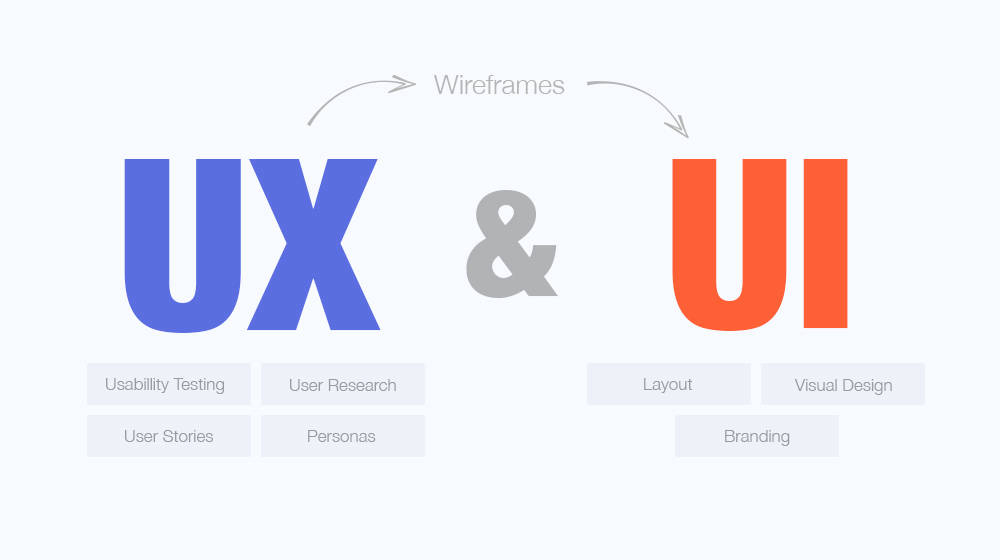A thorough UI/UX audit is an essential step for any business looking to improve its website’s performance and user experience. Recently, I had the opportunity to conduct a comprehensive audit across more than 30 Fortune 500 company websites, each presenting a unique set of challenges and opportunities. The goal of this audit was to identify recurring UI/UX issues that could be impacting user engagement, conversion rates, and overall satisfaction. In this blog, I’ll share the key issues I found across these websites, providing actionable insights and recommendations that can help businesses optimize their sites for better user experience and improved performance.
Key Insights from My UI/UX Audit:
1. Smaller Font Size Used for Key Content Areas
Issue: Important content such as headings and product descriptions has a font size smaller than recommended for optimal readability.
Recommendation: Use a minimum font size of 16px for body text and 24px for headings to ensure content is legible across all devices.
2. Unclear and Merged CTA Buttons
Issue: The Call-to-Action (CTA) buttons merge with surrounding text, making them less prominent and harder for users to identify.
Recommendation: Use contrasting colors for CTA buttons and add adequate spacing around them to make them more distinguishable from other elements.
3. Drop-down Navigation Icon Too Small
Issue: The drop-down navigation icon on the website is too small, making it difficult for users to interact with it, especially on mobile devices.
Recommendation: Increase the size of the drop-down navigation icon to make it more visible and accessible. This improvement ensures that users can easily access the navigation options without frustration.
4. Cluttered Menu Text
Issue: The menu text is long and the font size is small, creating a cluttered and overwhelming user experience.
Recommendation: Simplify menu text by shortening phrases and increasing the font size. This change enhances readability and improves the overall aesthetic of the navigation menu.
5. Poor Page Loading Speed
Issue: The website’s Core Web Vitals assessment fails, with the Largest Contentful Paint (LCP) time at 4.1 seconds. This metric directly affects how quickly content appears on the screen and is crucial for user satisfaction.
Recommendation: Optimize images, implement lazy loading, and set up caching strategies to reduce the page loading time. These adjustments improve UX and boost SEO rankings.
6. Header Banner Navigation Visible on Hover Only
Issue: The header banner navigation is only visible when users hover over the area, making it hard to quickly access vital navigation links.
Recommendation: Keep the navigation always visible to improve accessibility and ensure users can quickly find what they need.
7. Small CTA on Header Image
Issue: The Call-to-Action (CTA) on the header image is too small and placed awkwardly in the bottom left corner, making it less effective.
Recommendation: Relocate the CTA to a more prominent position and increase its size to make it more visible and compelling.
8. No Clear Visual Focus on Key Elements
Issue: The layout lacks a clear visual hierarchy, making it hard for users to know where to focus first.
Recommendation: Establish a clear visual hierarchy with size, contrast, and spacing to guide users’ attention toward key elements (e.g., product image, CTA button).
9. Inconsistent Button Styles
Issue: Buttons across the website have inconsistent styling or appear too similar to other elements, making it unclear which actions are clickable.
Recommendation: Standardize button design across the website, using consistent colors, shapes, and sizes to enhance predictability and clarity.
10. No Option to Quickly Add Products to Cart
Issue: The website lacks a “Quick Add to Cart” feature, which could streamline the shopping experience for users.
Recommendation: Introduce a “Quick Add to Cart” button on product listing pages, allowing users to add products without navigating away from the current page.
11. Lack of Customer Reviews on Product Pages
Issue: Product pages do not feature customer reviews, which are a critical factor in building trust and converting potential buyers.
Recommendation: Add a customer reviews section to each product page to provide social proof and increase trustworthiness.
12. Small Font Size for Product Descriptions
Issue: The product description text is smaller than ideal, making it hard for users to read detailed information about the products.
Recommendation: Increase the font size of product descriptions to make them more readable, improving the overall shopping experience.
13. Product Images Lacked Lifestyle Context
Issue: Product images on the website do not include lifestyle photos, leaving users with no context for how the products could be used in real life.
Recommendation: Incorporate lifestyle images that show products in real-life settings. This helps users envision how the product would look or function in their own lives.
14. Recent and Negative Reviews Display First
Issue: The most recent and negative reviews appear first on the review section, which could discourage potential buyers.
Recommendation: Reorganize the review section to feature a mix of positive and recent reviews, or allow users to filter reviews by rating type.
15. Invisible Scroll Bar for Product Listings
Issue: The scroll bar for product listings only becomes visible after the user begins scrolling, which hinders the browsing experience.
Recommendation: Ensure that the scroll bar is persistently visible to encourage users to explore more products.
16. Overwhelming Pop-up Ads
Issue: Pop-up ads or notifications are too frequent or intrusive, disrupting the user experience.
Recommendation: Limit pop-ups to avoid overwhelming users and ensure they are relevant to the user’s intent. Consider offering a non-intrusive banner or exit-intent pop-up.
17. No Clear Feedback After User Actions
Issue: The website does not provide sufficient feedback after users complete an action, such as submitting a form, clicking a button, or adding an item to their cart.
Recommendation: Implement clear feedback messages (e.g., “Item added to cart“) or visual cues (e.g., cart icon update) after key actions to inform users of successful interactions.
18. Lack of Social Proof and Trust Signals
Issue: There is insufficient trust signals on the website, which can make potential customers feel uneasy about making a purchase or providing personal information.
Recommendation: Add trust signals such as security badges, customer testimonials, case studies, and social proof (e.g., number of happy customers, reviews).
19. Unclear or Missing Contact Information
Issue: Contact information is not easy to find, making it hard for users to get in touch with the company for support or inquiries.
Recommendation: Make contact information easily accessible, ideally in the header or footer, and ensure users can quickly reach customer support via email, phone, or live chat.
20. Lack of Visual Consistency Across Pages
Issue: Pages on the website look disjointed due to inconsistent use of colors, fonts, or design elements.
Recommendation: Ensure consistency in design elements, such as typography, colors, button styles, and image treatments, to maintain a cohesive experience throughout the site.
21. Inconsistent or Missing Branding
Issue: Branding is inconsistent across the website, or it is unclear to users what the brand stands for.
Recommendation: Ensure that the brand’s visual elements (e.g., logo, color scheme, typography) are consistent across all pages to reinforce the company’s identity.
22. Announcement Bar Visibility and Functionality
Issue: The announcement bar lacks prominence, is not sticky, and is too small to effectively grab users’ attention.
Recommendation: Increase the contrast of the announcement bar to make it stand out, ensure it remains sticky at the top of the page, and adjust its size to ensure it’s large enough to capture attention without distracting from the main content.
Auditing more than 30 Fortune 500 company websites revealed a common theme: even the most well-established brands face UI/UX challenges that hinder their website’s potential. Whether it’s issues with navigation, poor mobile responsiveness, or slow loading speeds, addressing these concerns is crucial for maintaining a competitive edge.
In the fast-evolving digital landscape, eCommerce UX trends play a significant role in shaping user expectations. Features like AI-driven personalization, voice search optimization, seamless checkout experiences, and immersive product displays (such as AR/VR) are becoming essential for online retailers. Businesses that fail to adapt to these trends risk losing customers to competitors with more intuitive and engaging experiences.
By implementing the recommendations provided in this blog, businesses can improve site performance, enhance usability, and create a more positive experience for users. A well-designed website is not just about aesthetics; it’s about ensuring your visitors can easily navigate, engage, and convert. Investing in a thoughtful UI/UX strategy will pay off in increased customer satisfaction and long-term business success.









